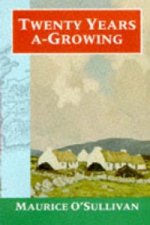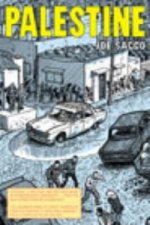
Kód: 04804836
Landscapes of Protest in the Scottish Highlands after 1914
Autor Iain J.M. Robertson
In November 1918, the implementation of agrarian change in the Scottish Highlands threatened another wave of unemployment and eviction for the land-working population, which led to widespread and varied social protest. Those who h ... celý popis
- Jazyk:
 Angličtina
Angličtina - Vazba: Pevná
- Počet stran: 272
Nakladatelství: Taylor & Francis Ltd, 2013
- Více informací o knize

Mohlo by se vám také líbit
-

Delivery Man Stan
252 Kč -

Schooling, Childhood, and Bureaucracy
1681 Kč -

Labyrint revue 35-36
164 Kč -

Johannes Bugenhagen
209 Kč
Dárkový poukaz: Radost zaručena
- Darujte poukaz v libovolné hodnotě a my se postaráme o zbytek.
- Poukaz se vztahuje na celou naši nabídku.
- Elektronický poukaz vytisknete z e-mailu a můžete ihned darovat.
- Platnost poukazu je 12 měsíců od data vystavení.
Více informací o knize Landscapes of Protest in the Scottish Highlands after 1914
Nákupem získáte 517 bodů
 Anotace knihy
Anotace knihy
In November 1918, the implementation of agrarian change in the Scottish Highlands threatened another wave of unemployment and eviction for the land-working population, which led to widespread and varied social protest. Those who had been away on war service (and their families) faced returning to exactly the same social and economic conditions in the Scottish Highlands they had hoped they had left behind in the struggle to make 'a land fit for heroes'. Widespread and varied social protest rapidly followed. It argues that, previously, there has been a failure to capture fully the geography, chronology typology and rate of occurrence of these events. The book not only offers new insights and a greater understanding of what was happening in the Highlands in this period, but illustrates how a range of forms of protest were used which demand attention, not least for the fact that these events, unlike most of the earlier Land Wars period, were successful. There are functioning townships in the Highlands today that owe their existence to the land invasions of the 1920s. The book innovatively concentrates on formulating explanation and interpretation from within and looks to the crofting landscape as base, means and motive to disturbance and interpretation. It proposes that protest is much more convincingly understood as an expression of environmental ethics from 'the bottom up' coming increasingly into conflict with conservationist views expressed from 'the top down' It focuses on individual case studies in order to engage more convincingly with an important evidential base - that of popular memory of land disturbances - and to adopt a frame and lens through which to explore the fluid and contingent nature of protest performances. Based upon the belief that in the study of landscapes of social protest the old shibboleth of space as solely passive setting and symbolic register is no longer tenable is paid here to nature/culture interactions, to vernacular ecological beliefs and to the dynamic and formative role of landscape in people's lifespaces. It suggests reading and engaging with event as text in anticipation of revealing their fluid and contingent nature rather than, as has previously been done, imposing single master narratives. Critically, this book draws on oral testimony. The view taken here is that historical events are dynamic. While written, primary source material is nearly always static - recording only particular 'moments' of an incident - oral testimony captures different 'moments' of the same event and, if interwoven with the written archival material as here proposed, can only enrich our understanding.
 Parametry knihy
Parametry knihy
Zařazení knihy Knihy v angličtině Humanities History Regional & national history
5172 Kč
- Plný název: Landscapes of Protest in the Scottish Highlands after 1914
- Podnázev: The Later Highland Land Wars
- Autor: Iain J.M. Robertson
- Jazyk:
 Angličtina
Angličtina - Vazba: Pevná
- Počet stran: 272
- EAN: 9781472411372
- ISBN: 1472411374
- ID: 04804836
- Nakladatelství: Taylor & Francis Ltd
- Hmotnost: 636 g
- Rozměry: 236 × 163 × 23 mm
- Datum vydání: 13. November 2013
Oblíbené z jiného soudku
-

Hundred Years' War on Palestine
356 Kč -

Ethnic Cleansing of Palestine
378 Kč -

History of Japan
405 Kč -

Ten Myths About Israel
341 Kč -

Strange Death of Europe
433 Kč -

Decline and Fall of the Roman Empire
130 Kč -

Secret History
320 Kč -

God's Playground A History of Poland
1700 Kč -

Mayflower
388 Kč -

How to be a Victorian
303 Kč -

Plantagenets
357 Kč -

General's Son
426 Kč -

Iran: A Very Short Introduction
250 Kč -

Temples of Karnak
3798 Kč -

Cuneiform
276 Kč -

Twenty Years A-Growing
250 Kč -

China in Africa
906 Kč -

History of Witchcraft in England from 1558 to 1718
460 Kč -

Bohemian Paris
415 Kč -

Islandman
276 Kč -

Lancaster And York
490 Kč -

Alexiad
427 Kč -

Inside Hitler's Greece
518 Kč -

Modern France: A Very Short Introduction
283 Kč -

Diana: Her True Story - In Her Own Words
323 Kč -

The Fourth Turning
393 Kč -

The Oxford History of Ancient Egypt
384 Kč -

Churchill: The Power of Words
433 Kč -

Palestine
564 Kč -

Korean History in Maps
708 Kč -

Great Gatsby (Wisehouse Classics Edition)
408 Kč -

Viking Way
1145 Kč -

The Thirteenth Tribe
309 Kč -

My Promised Land
378 Kč -

Vanished Kingdoms
542 Kč -

Age Of Revolution
410 Kč -

Life and Death of Anne Boleyn
585 Kč -

Coming of the Third Reich
464 Kč -

Children of Ash and Elm
464 Kč -

Europe Between the Oceans
798 Kč -

Socialism Betrayed
477 Kč -

303 Squadron
464 Kč -

Ancient Celts, Second Edition
656 Kč -

Dancing in the Glory of Monsters
396 Kč -

Battle of Britain: Luftwaffe Blitz (Images of War)
606 Kč -

Age of Confucian Rule
851 Kč -

Beyond Band of Brothers
410 Kč -

Benjamin Franklin
410 Kč -

On China
487 Kč
Osobní odběr Praha, Brno a 12903 dalších
Copyright ©2008-24 nejlevnejsi-knihy.cz Všechna práva vyhrazenaSoukromíCookies



 Vrácení do měsíce
Vrácení do měsíce 571 999 099 (8-15.30h)
571 999 099 (8-15.30h)